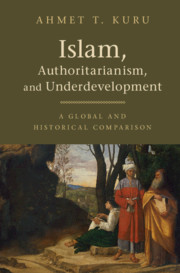Book contents
- Islam, Authoritarianism, and Underdevelopment
- Islam, Authoritarianism, and Underdevelopment
- Copyright page
- Dedication
- Contents
- Maps
- Tables
- Preface
- Introduction
- Part I Present
- 1 Violence and Peace
- 2 Authoritarianism and Democracy
- 3 Socioeconomic Underdevelopment and Development
- Part II History
- Bibliography
- Index
1 - Violence and Peace
from Part I - Present
Published online by Cambridge University Press: 18 June 2019
- Islam, Authoritarianism, and Underdevelopment
- Islam, Authoritarianism, and Underdevelopment
- Copyright page
- Dedication
- Contents
- Maps
- Tables
- Preface
- Introduction
- Part I Present
- 1 Violence and Peace
- 2 Authoritarianism and Democracy
- 3 Socioeconomic Underdevelopment and Development
- Part II History
- Bibliography
- Index
Summary
This chapter analyzes the problem of violence in many Muslim countries. It emphasizes that there is no Muslim exceptionalism; violence has occurred in all parts of the world. The frequent Muslim terrorist activities are a relatively recent trend that began in the 1980s. This trend is related to the worldwide decline of socialism and the rise of religious political movements. The chapter critically analyzes the explanations that point to either Islam or Western colonialism as the root cause of violence in several Muslim countries. The chapter examines the roles of Jihadi-Salafism and the ulema in Muslim countries’ problems with violence. It emphasizes that military conflicts and terrorism have multiple causes, including socioeconomic and political conditions, especially in authoritarian states.
- Type
- Chapter
- Information
- Islam, Authoritarianism, and UnderdevelopmentA Global and Historical Comparison, pp. 14 - 31Publisher: Cambridge University PressPrint publication year: 2019

